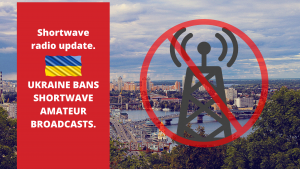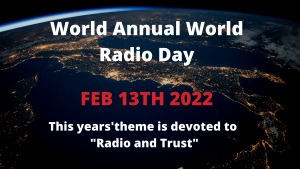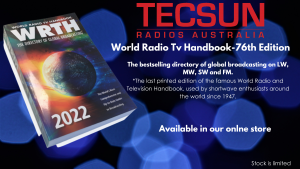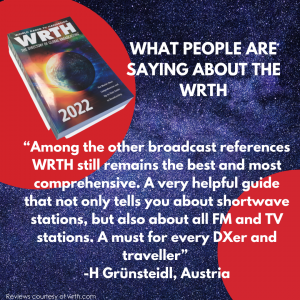
The world watches as the crisis in Ukraine unfolds. The Ukrainian government has imposed a state of emergency. This state of emergency allows the authorities to temporarily limit the public’s constitutional rights.
This includes a ban on producing and spreading information that may “destabilise the situation as well as a ban on amateur radio communications during the current conflict with Russia.
To supplement shortwave broadcasts to that country, shortwave broadcaster WRMI (USA based) initially resumed its relays of the daily English language broadcast of Radio Ukraine International, the official overseas service of Ukrainian Radio. (This information is most probably provided to WRMI from the Ukraine via secure internet). Subsequent to this, WRMI reverted to broadcasting in Ukranian.
RUI (Radio Ukraine International) can be heard daily, except Friday, at 1200-1230 UTC on 5010 kHz.
Historically shortwave radio has been banned in Poland and Russia during times of conflict despite it being a critical source of emergency communication.
Our thoughts and prayers are with those currently in conflict.

This Annual event dedicated to radio was created by *UNESCO in 2011.
*UNESCO stands for The United Nations Educational, Scientific and Cultural Organisation which is a specialised agency of the United Nations aimed at promoting world peace and security through international cooperation in education, arts, sciences, and culture.
The first-ever world radio day commenced in 2011 on the anniversary of the founding of United Nations Radio.
This year 2022 theme is devoted “Radio and Trust”
Reporting of radio use around the world indicates that radio continues to be one of the most trusted and used media in the world. In more recent times, even during the most connected era, the isolating nature of word pandemics, natural disasters, and weather events, radio has continued to be a trusted source of communications, not only to those in more isolated regions but also when power is out and connectivity is severed.
Radio is a powerful medium for celebrating humanity in all its diversity and constitutes a platform for democratic discourse. At the global level, radio remains the most widely consumed medium. This unique ability to reach out to the widest audience means radio can shape a society and serves as an arena for all voices to speak out, be represented, and heard.
Radio stations serve diverse communities, offering a wide variety of programs, viewpoints, and content, and reflect the diversity of audiences in their organizations and operations.
What will you do to celebrate World Radio Day? Turn on your radio, tune the shortwave bands and see what countries you can hear. There is always something happening on the shortwave bands, someone to listen to and learn from.

Tecsun Radios Australia is proud to offer you the opportunity to own this piece of history in the making!
This is 76th edition is the last printed edition of the famous World Radio and Television Handbook, used by shortwave enthusiasts around the world since 1947.
Do not miss the opportunity to acquire the last printed version of the valuable radio resource, often promoted as the most comprehensive guide to broadcasting on the planet.
A must-have for all short wave enthusiasts, This regularly updated handbook is the culmination of an international network of contributors to provide the most up-to-date information on mediumwave, shortwave, and FM broadcasts and broadcasters available in any publication.
This 670-page book contains the includes articles on the further development of HF transmitters, the history of Radio, technical monitoring at VOA, the history of KTWR on Guam as well as the following.
An A-Z country by the country directory of national radio stations with SW, MW, and FM frequencies and contact details, websites and more.
International Radio – full details of the broadcasters and their winter (B20) shortwave frequency schedules, with an expanded Clandestine section.
Frequency Lists – MW by frequency within the region, SW by frequency including DRM broadcasts.
Technical Articles
Reviews of the latest receivers & equipment, including many Tecsun models.
Alphabetical listing of TV broadcasters by country
Colour Maps showing SW transmitter sites
Reference pages including domestic and International Shortwave transmitters, DX Clubs, Standard Time & Frequency transmissions, Internet resources etc

Get your copy here


